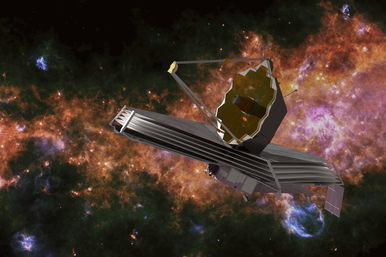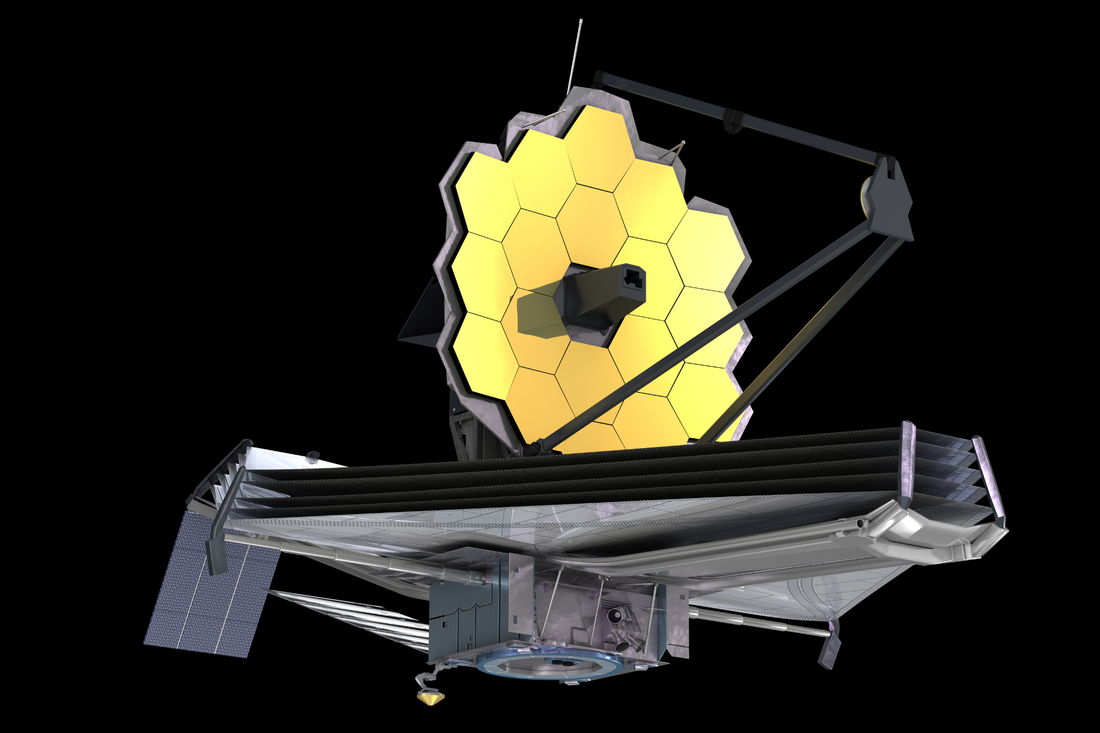 James Webb Telescope in Space. Elements of this image furnished by NASA (Credit: NASA) James Webb Telescope in Space. Elements of this image furnished by NASA (Credit: NASA) Since the dawn of human civilization, we have gazed at the night sky, seeking answers to the fundamental questions about our universe. The James Webb Space Telescope (JWST), has become one of humanity's most advanced observatories, holding the potential to unravel some of the deepest cosmic mysteries. The JWST, represents a monumental leap forward in our quest to understand the cosmos. This next-generation space telescope, combines cutting-edge technology and scientific ingenuity to push the frontiers of astronomical exploration. Unprecedented Observational Capabilities: Enhanced Sensitivity: The JWST boasts a massive 6.5-meter segmented primary mirror, nearly three times larger than the Hubble Space Telescope's mirror. This larger size, combined with its infrared focus, allows the JWST to collect and analyze faint celestial signals with extraordinary sensitivity. It can peer deeper into space, observing objects that existed shortly after the Big Bang. Infrared Vision: The JWST's primary objective is to study the universe in the infrared portion of the electromagnetic spectrum. Infrared light can penetrate interstellar dust clouds that obscure visible light, enabling the telescope to observe regions of star formation, distant galaxies, and even detect the chemical composition of exoplanet atmospheres. This capability opens new avenues for studying the origins of stars, galaxies, and potentially finding signs of life beyond our solar system. Unveiling the Early Universe: Observing the First Galaxies: The JWST's unprecedented sensitivity and infrared capabilities allow it to peer into the early universe, capturing the light emitted by the first galaxies that formed after the Big Bang. By studying these ancient light sources, astronomers can gain insights into the processes that led to the birth of galaxies, the formation of stars, and the evolution of cosmic structures. Probing Exoplanet Atmospheres: One of the most exciting prospects of the JWST is its ability to analyze exoplanet atmospheres. By observing the starlight that passes through the atmospheres of distant planets, the telescope can detect the presence of key molecules, such as water vapor, carbon dioxide, and methane. Such discoveries provide crucial clues about the habitability and potential for life on exoplanets. Unraveling the Dark Universe: The JWST will play a pivotal role in studying dark matter and dark energy, the two mysterious components that make up a significant portion of our universe. By observing the gravitational lensing effects caused by massive galaxy clusters, such as Pandora's Cluster, the telescope will help unravel the distribution of dark matter and shed light on the cosmic processes driving the accelerated expansion of the universe. The shared data and discoveries made by the JWST will foster global collaboration and advance our collective understanding of the cosmos. The James Webb Space Telescope revolutionizes our understanding of the universe. With its unrivaled sensitivity, infrared vision, and advanced technology, it is unveiling the universe's secrets, from the earliest moments after the Big Bang to the search for life beyond our own planet.
0 Comments
Leave a Reply. |
authorBryant Maxwell - Project Communications Officer Archives
November 2023
Categories |
- Home
- Design Your Habitat
-
Contests
- NASA Children's Art Contest
- Science in Action NASA Earth Comic Strip Contest >
- Moon Youth Art Competition Gallery
- Project Mars
- New Horizons Ultima Art
- STEAM Your Science >
- 2017 Eclipse Over Houston >
- Humans In Space Art- Video Challenge >
- Humans In Space Art - Youth Competition >
- Humans In Space Art- CAFE >
- Events
- Services
- Community
- Donate
- Subscribe
- Contact
- Home
- Design Your Habitat
-
Contests
- NASA Children's Art Contest
- Science in Action NASA Earth Comic Strip Contest >
- Moon Youth Art Competition Gallery
- Project Mars
- New Horizons Ultima Art
- STEAM Your Science >
- 2017 Eclipse Over Houston >
- Humans In Space Art- Video Challenge >
- Humans In Space Art - Youth Competition >
- Humans In Space Art- CAFE >
- Events
- Services
- Community
- Donate
- Subscribe
- Contact


 RSS Feed
RSS Feed